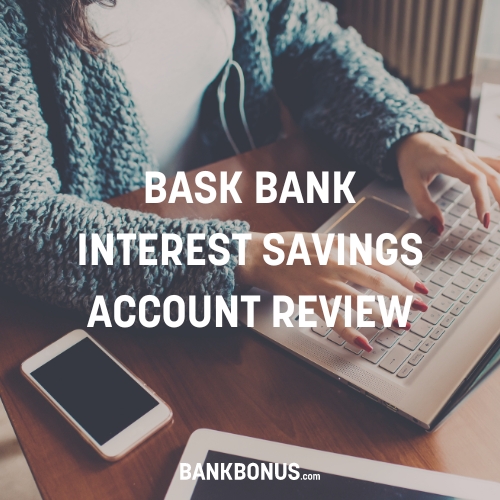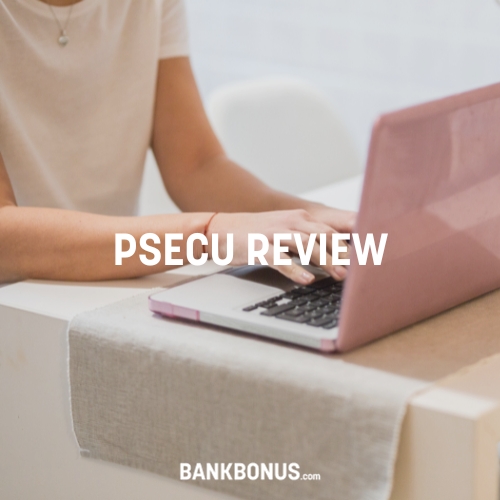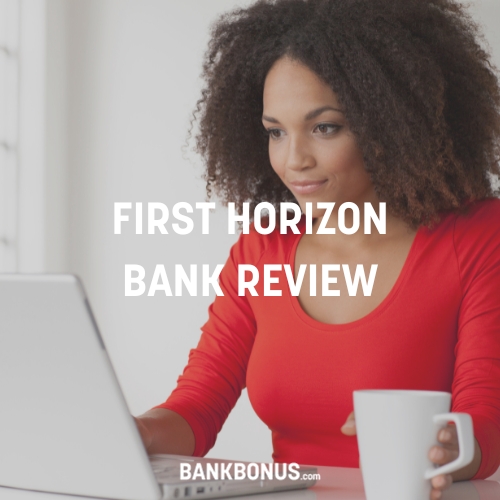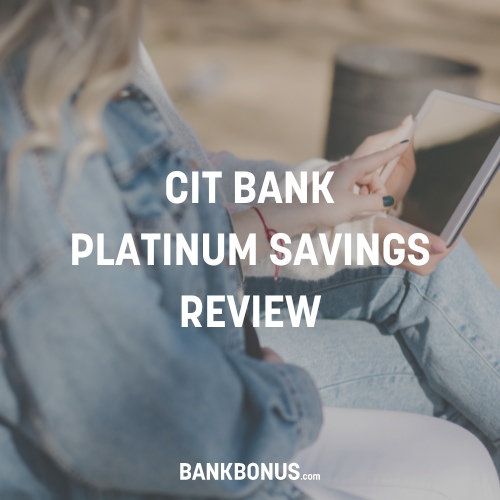HSBC Bank USA is the American subsidiary of HSBC — a British multinational investment bank headquartered in London.
HSBC was established in Hong Kong in 1865 as The Hongkong and Shanghai Bank and now serves more than 39 million customers in 62 countries across six continents.
HSBC US is based out of New York City and has recently dwindled its number of branches from 148 to 35 – 40 branches.
Most of its brick-and-mortar banks are located in the NYC area, but they have a few locations elsewhere. HSBC offers deposit accounts, personal and home loans, investment and retirement accounts, and credit cards.
Since 2005, HSBC has been operating an online-only banking platform called HSBC Direct, which includes high-yield checking, savings, and Certificate of Deposit accounts — all online or from your smartphone.
In this post, you’ll learn about the ins and outs of HSBC. For starters, let’s jump into the bank’s best products and features.
HSBC Bank Products
HSBC has one checking account that includes access to HSBC’s global network of ATMs, optional overdraft protection, international banking services, and mobile banking.
1. HSBC Premier Checking Account
The HSBC Premier checking account is HSBC’s premium account that helps you manage your money worldwide. As an account targeting the global consumer, you’ll receive related perks like:
- Free International account opening and portable credit history
- No fees for Global Transfers between eligible HSBC accounts worldwide
- Convert, hold, and send money abroad with no transfer fees with the Global Money account
- No U.S. HSBC ATM fees worldwide
With a Premier account, you’ll have a dedicated relationship manager, preferred rates on home financing, and no foreign transaction fees when you use your debit card internationally. You’ll also have access to 24/7 global support to talk with their staff when you need it.
Opening a Premier account also allows you to enroll in HSBC’s Premier Savings account, which we cover below.
The requirements for HSBC Premier are pretty steep, to put it mildly. There’s a $50 monthly fee, which you’ll only be able to avoid if you do one of the following:
- Maintain a balance of $100,000 in combined U.S. consumer and qualifying commercial U.S. Dollar deposit and investment accounts
- Make monthly direct deposits of $5,000 or more
- Have an HSBC U.S. residential mortgage loan with an original loan amount of at least $500,000
2. HSBC Premier Savings Accounts
HSBC has one savings account, the HSBC Premier Savings account. To open it, you must have an HSBC Premier checking account.
Premier Savings is the closest thing that HSBC offers to a high-yield savings account (outside of HSBC Direct, which is covered below).
At the moment, you can earn 0.01% on balances up to $24,999, 0.10% on $25,000 to $99,999.99, and 0.15% on $100,000 or more.
Premier Savings comes with a $50 monthly service fee, which is waived with one of the same qualifying activities as Premier Checking ($100,000 in combined HSBC deposits, $5,000 monthly direct deposit, or a $500,000 mortgage).
Learn More:
HSBC CDs (Certificates of Deposit)
HSBC offers Certificate of Deposit accounts (CDs) with attractive interest rates. If you’ve never looked into a CD before, it’s a hands-off savings account with a fixed interest rate.
CD rates are typically higher than traditional savings, but you’ll be penalized if you withdraw funds before the account fully matures.
With HSBC, CDs are where you can expect to find the highest APYs. Account terms are 6 months, 12 months, or 24 months. The longer you commit your funds, the more you’ll earn in interest.
For example, if you open a six-month CD, you’ll currently earn a 4.00% APY. The 12-month CD bumps up your rate to 3.80% and the 24-month CD has a 3.50% APY.
These rates are pretty competitive for CDs, so if you’re looking to earn interest with HSBC without taking any risks (other than having your money locked into a fixed term), a CD might be your best bet.
HSBC Credit Cards
HSBC currently has two different credit card options, all offered through Mastercard. All HSBC credit cards can be used with Tap & Go contactless payment, as well as Apple Pay, Google Pay, and Samsung Pay. They’ll also automatically enroll you in HSBC fraud protection and give you free access to your FICO score.
Let’s take a look at each card that HSBC has to offer:
1. HSBC Premier
HSBC Premier is the bank’s introductory travel rewards card.
HSBC Premier World comes with a solid set of benefits, including a 35,000-point bonus (worth about $400) if you spend at least $3,000 in your first three months of opening the account and there’s no annual fee.
When it comes to earning points, you’ll earn 2x points on all travel expenses and 1x points on all other purchases.
You’ll also get an $85 dollar credit toward a TSA Precheck application fee and complimentary Wi-Fi at millions of hotspots worldwide through Boingo, and a $5 Lyft app credit monthly if you take at least three Lyft rides.
Premier World has no foreign transaction fee and sets you up with travel insurance that covers cancellations, accidents, and lost or damaged baggage.
2. HSBC Elite
HSBC Premier World Elite is HSBC’s highest-tier credit card and is effectively a supercharged version of the Premier card.
The introductory bonus is bumped up to 50,000 points (worth about $750), and you’ll have to spend $4,000 in the first three months to get it.
You can also earn more points, too. Premier World Elite comes with 3x points on travel, 2x points on dining, and 1x points on everything else.
With this card, you’ll get the same TSA Precheck credit, $400 per year in travel credits, unlimited lounge access, Wi-Fi access at thousands of hotspots, and travel insurance.
Furthermore, this card is only available to those who have a Premier checking or savings account. Unfortunately, there is no way to avoid the steep $395 annual fee, no matter which HSBC bank account you hold.
Fees
HSBC’s pricing structure is generally in line with that of the bigger American banks — think Wells Fargo, Bank of America, or Chase.
As such, you can expect to navigate a number of fees.
Monthly Maintenance Fees
First of all, if you hate the idea of having a fee of any kind associated with your bank account, you may want to look elsewhere. HSBC has steep fees that are hard to waive.
The steps for getting an account fee waived depend on the account requirements. In general, the more premium the account, the more difficult it is to meet the requirements.
When considering which account to sign up for, be sure to determine whether or not your personal financial situation will allow you to meet the requirements.
Overdraft Fees
HSBC offers overdraft protection, but only in the form of credit. You can apply for Select Credit, which is a credit line that covers your negative balance.
The thing to keep in mind here is that, like any line of credit, you’ll be subject to paying interest.
The current APR on overdraft protection is 5.99% for an introductory rate, and then it goes up to 7.99% after 45 days, so depending on the amount that you go over, you might be better off just paying the fee.
ATM Fees
HSBC offers fee-free ATM withdrawals at in-network ATMs. They are a part of the Allpoint® ATM network, so it’s pretty easy to find an ATM They also don’t charge out-of-network ATM charges, saving you even more money.
Getting Started
Signing up for an HSBC account can be done in person, online, or over the phone.
To enroll in an account, no matter how you choose to do it, you’ll have to come ready with the following information:
- Social Security Number
- DOB, Telephone Number, E-mail Address
- Employment Information
- US Address
- Driver’s License, Passport, or Other State ID
- Banking Account and Routing Number for the account that will fund your new account
After you submit your application, you’ll get an email regarding your application status and directions for the next steps.
If the bank needs additional information, they’ll let you know. Once approved, you’ll have access to online banking and account information.
HSBC Bank Promotions
Here are some of the best HSBC Bank promotions going on right now:
1. HSBC Premier - up to $3000 bonus
Expires: September 30, 2025
Available nationwide, HSBC is offering up to $3,000 in welcome bonuses when you open a new HSNC Premier checking account and complete qualifying activities. Unlike previous offers, which were mainly focused on large cash deposits, this time around they are prioritizing your total relationship.
This is a tiered bonus, the more activities you complete, the more you can earn. The activities include establishing a direct deposit (at least $10,000 monthly), establish a residential mortgage and new money cash deposits (or investments).
Deposit products are offered in the U.S. by HSBC Bank USA, N.A. Member FDIC. *Investment and annuity products are offered by HSBC Securities (USA) Inc. (HSBC Securities), member NYSE/FINRA/SIPC. HSBC Securities is an affiliate of HSBC Bank USA, N.A.
How to earn the bonus
The HSBC Premier sign up offer requires you to optionally, set up eligible direct deposits and deposit and maintain a minimum balance in order to earn the $3000 bonus. Full requirements to receive this bonus are:
- Open a new HSBC Premier checking account during the Offer Period (July 1 - September 30, 2025).
- Set up recurring monthly direct deposits of $10,000 or more for 3 consecutive months, Earn $500.
- Deposit or invest $100,000 or more and maintain balances for 3 consecutive months, Earn $1,000.
- Complete a new HSBC U.S. residential mortgage application by September 30, 2025, with mortgage funding by December 31, 2025, AND deposit or invest $200,000 or more and maintain balances for 3 consecutive months, Earn $1,500. *Customers who qualify for the $1,500 Mortgage and New Money Cash bonus will automatically qualify for the $1,000 New Money Cash bonus.
- If all offer requirements are met, the bonus(es) will be deposited within 8 weeks from the date that you complete the qualifying activities.
Apply now to earn the $3000 bonus from HSBC
2. Premier [Referral] - $500 bonus
Expires: December 31, 2025
HSBC has launched their next iteration of their "Share The Experience" referral program, where current HSBC customers can earn up to $5,000 by referring friends and family to the bank.
For the new customer, HSBC is offering a $500 welcome bonus. This is lower than it was previously, but they now allow the accounts to be opened online – which is a pretty big perk compared the old requirement of only in-branch.
You'll need a custom referral code, but the requirements are otherwise fairly easy to hit.
For your friend, the bonus is $500 with qualifying balances of $75,000.00-$499,999.99 in deposit and/or eligible investment accounts OR $1,000 with qualifying balances of $500,000 or more in deposit and/or eligible investment accounts.
How to earn the bonus
The Premier [Referral] sign up offer requires you to use a referral link, and optionally, set up eligible direct deposits and deposit and maintain a minimum balance in order to earn the $500 bonus. Full requirements to receive this bonus are:
- Open a new Premier checking account using a referral code from an existing HSBC customer.
- Deposit $75,000 in either this account or combined across other HSBC accounts, OR have recurring direct deposits of at least $5,000, OR have a HSBC U.S. residential mortgage loan with an original loan amount of at least $500,000.
- Bonuses will be deposited to both the new and referring account within 8-12 weeks.
Apply now to earn the $500 bonus from HSBC
Learn More:
Security
First things first — HSBC is an FDIC-insured bank, so all of your deposits are protected up to $250,000.
When it comes to protecting you and your banking information, HSBC has a $0 liability online guarantee, so you’ll be 100% covered on any losses that come with unauthorized transactions.
HSBC also has a global security network that tracks suspicious activity no matter where you are.
If you’re interested in learning more about HSBC’s security measures, feel free to check out their site for information on how they protect customers.
Customer Service and Support
HSBC has a wide customer service network and several options for how to get in touch.
One of the benefits of HSBC being a global bank is that the firm operates in multiple time zones.
This flexibility allows them to offer live phone support, 24 hours a day, seven days a week.
You can also reach out on Apple Business Chat through the mobile banking app, hit them up on Twitter, or pop into your local branch.
If you have an issue that you think you can handle on your own, or just need a quick answer, you may also just want to check out the website for a helpful list of FAQs.
Customer Reviews
Overall, their customers seem to have mixed at best feelings about customer service quality.
For example, the bank’s average review score on TrustPilot is just 1.4-stars (out of 5), and 3.8-stars (out of 5) on WalletHub.
Here is what some of the bank’s customers have to say:
5-star rating:
It's always nice banking with professionals. HSBC understands the global financial system and helps it's card holders anywhere. Don't travel without an HSBC account.Tech Reviewer Trustpilot
4-star rating:
Overall good secure services, they could update many of their systems though and on some occasions my statements had errors but they were quickly rectified. I would recommend HSBC to others.Suleman Trustpilot
3-star rating:
In general - good but services are too slow.Nicole Mckey Trustpilot
Pros and Cons
Pros:
- Large, Global Bank
- Premium Perks for Higher Income Levels
- Traditional and Online Options
- Tons of Different Products and Services
- Flexibility for International Travel
Cons:
- High Fees (and lots of ’em)
- Average to Below Average Interest Rates
- Limited Physical Branches and ATMs
- High Balance Requirements
Frequently Asked Questions
Let’s go over some questions that often come up from potential new customers:
Is HSBC an online bank?
HSBC is both an online bank and a traditional bank. They have physical branches, and ATMs in the U.S, along with the opportunity to take advantage of mobile banking.
Is HSBC a good option for Americans?
HSBC is a global bank with locations and services offered worldwide. In the U.S., there are fewer branches than you could find elsewhere, but you’ll still have access to all of its products and services.
If you live in the U.S. and want a traditional banking experience with HSBC, you’re probably better off if you live in one of the ten states where the firm has a physical presence. If you don’t need ATM access, you might consider sticking to the online-only HSBC Direct.
Is HSBC the best international bank?
International banking is definitely one of the areas where HSBC stands out
You won’t have to worry about foreign transaction fees on any of their credit cards. And, because it’s a global bank, you’re more likely to find a suitable ATM while you’re abroad.
There are a few other banks that have an international presence as well (e.g., Barclays and Citibank). That said, the best international bank for you comes down to exactly what you’re hoping to get from a banking experience.
Is HSBC Bank Right For You?
Now, the moment of truth — Is HSBC the right place to continue your financial journey?
In many ways, they have a lot to offer. It has a wide variety of products to cover many banking needs.
There are two things that should help you make the final decision: your income level, and international services.
Overall, their accounts seem to cater more toward higher-income individuals. So, if you have a lot of money, you can take advantage of some pretty good benefits.
Similarly, if you travel often for work or for pleasure, you’ll find a good partner in HSBC with its global accessibility.
On the other hand, if you don’t travel much, or live in a rural area in the U.S., there’s not much of an incentive to sign up with them. It all comes down to understanding what you need from your bank and trusting your gut instinct.
Investment and annuity products are offered by HSBC Securities (USA) Inc. (HSI), member NYSE/FINRA/SIPC. HSI is an affiliate of HSBC Bank USA, N.A.
To become an HSBC Private Bank customer, you must be invited and reviewed on an individual basis. See your Relationship Manager for details.
Deposit products are offered in the U.S. by HSBC Bank USA, N.A. Member FDIC.
* Investment, annuities, and variable life insurance products are offered by HSBC Securities (USA) Inc. (HSI), member NYSE/FINRA/SIPC. In California, HSI conducts insurance business as HSBC Securities Insurance Services. License #: OE67746. HSI is an affiliate of HSBC Bank USA, N.A. Whole life, universal life, term life, and other types of insurance are offered by HSBC Insurance Agency (USA) Inc., a wholly owned subsidiary of HSBC Bank USA, N.A. Products and services may vary by state and are not available in all states. California license #: OD36843.
Investments, Annuity and Insurance Products: Are not a deposit or other obligation of the bank or any of its affiliates; Not FDIC insured or insured by any federal government agency; Not guaranteed by the bank or any of its affiliates; and subject to investment risk, including possible loss of principal invested.
All decisions regarding the tax implications of your investment(s) should be made in connection with your independent tax advisor.





Comments are closed.
Comments are closed here.